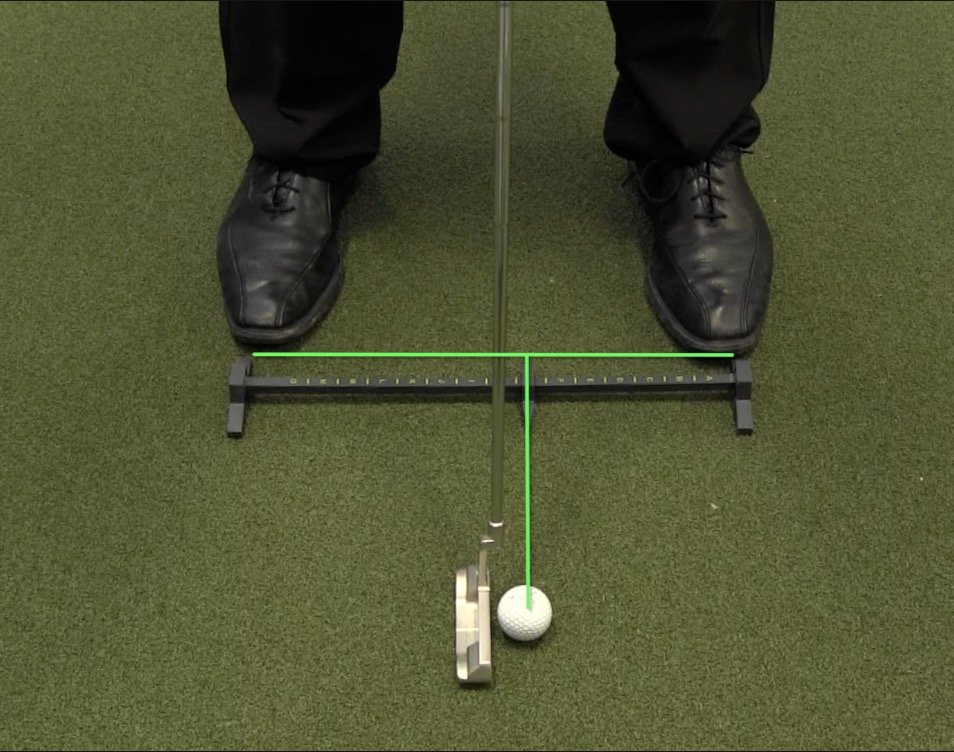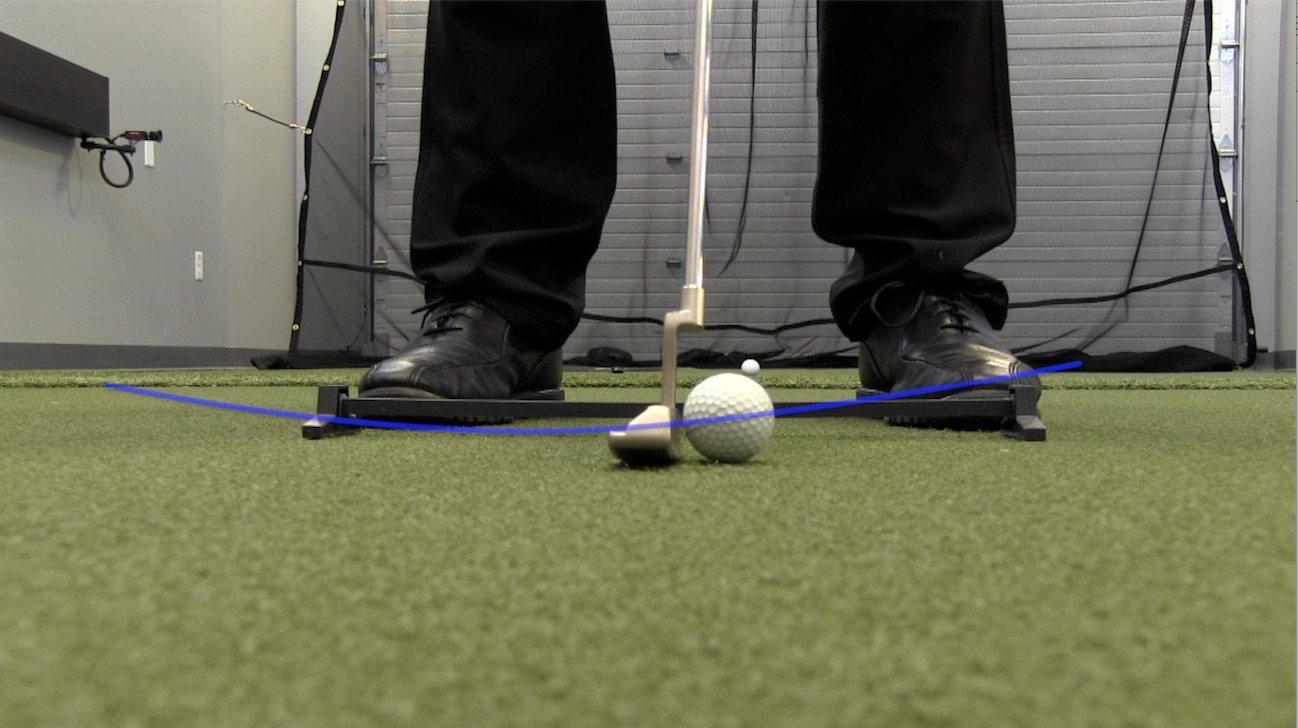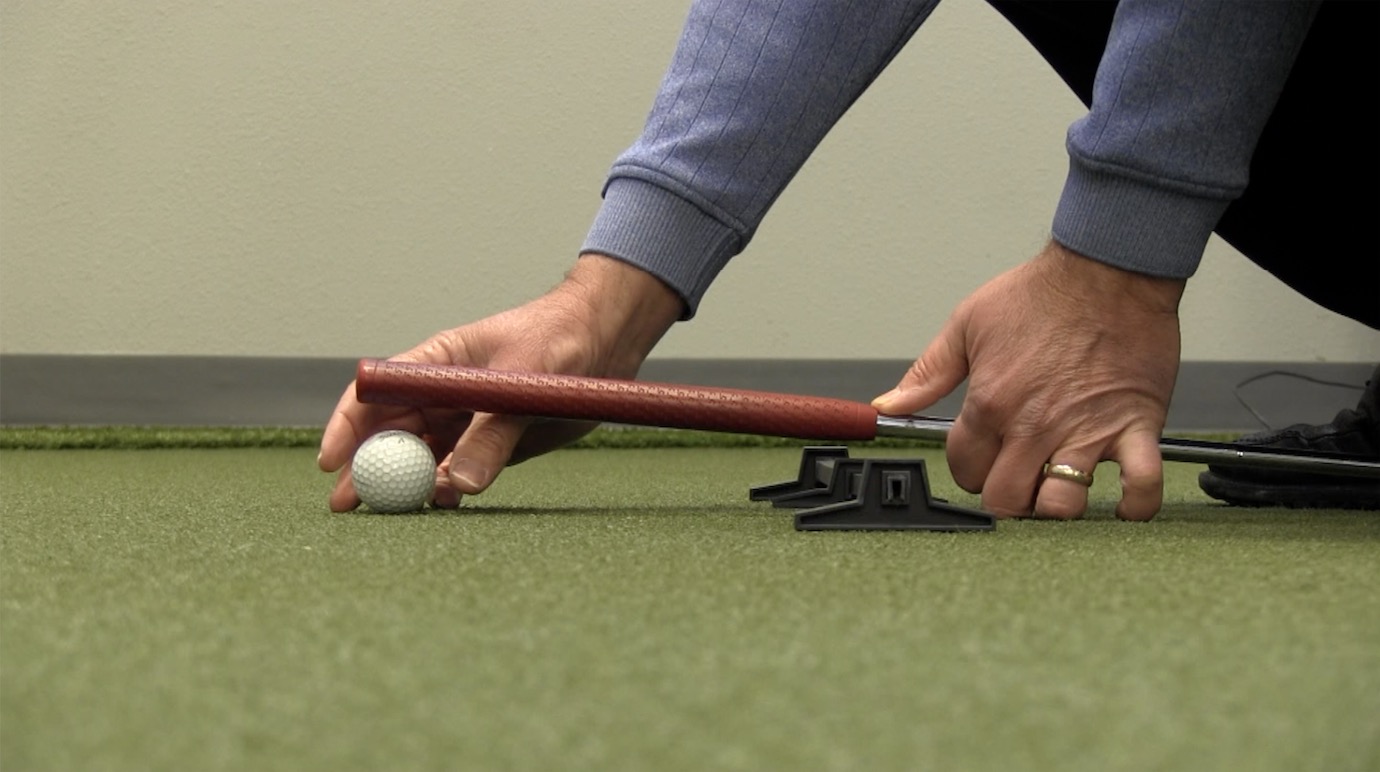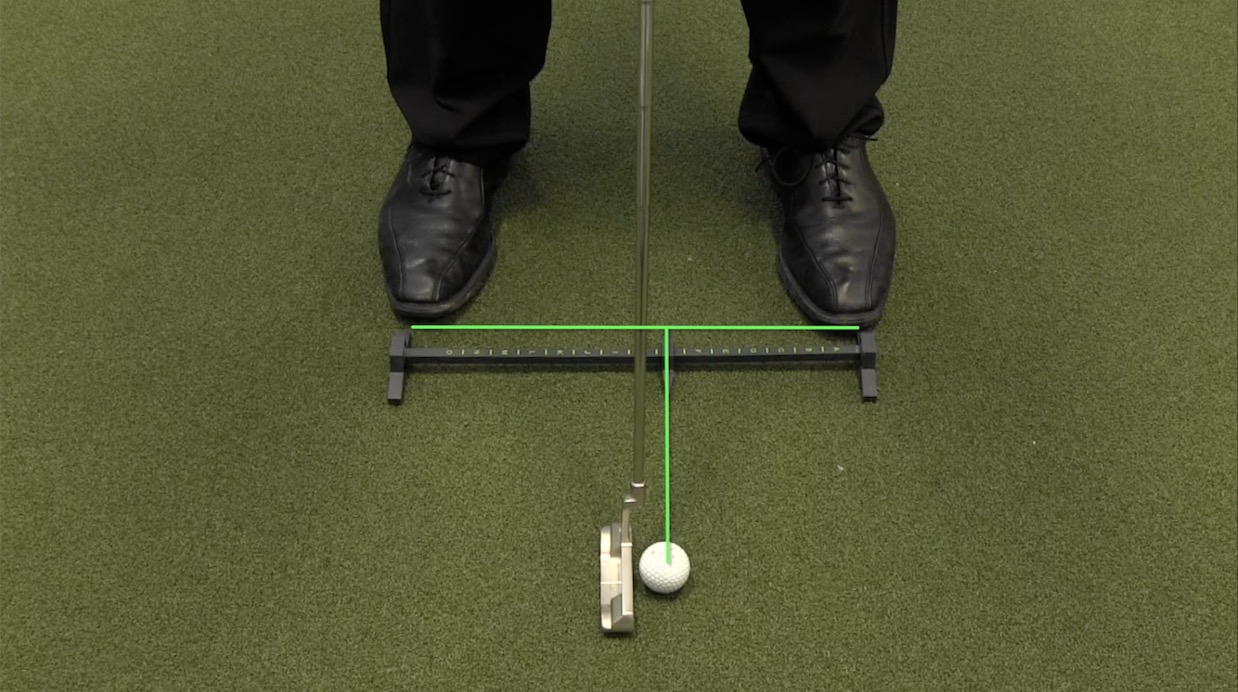Putter Ball Position
The Optimal Putter Golf Ball Position To Sink More Putts
There isn’t a single golfer out there who wouldn’t love to make more putts. Even I want to make more putts. And as someone who has worked with players of all levels to finally perfect their putting, I can tell you there’s one often-overlooked detail that makes all the difference.
Ball position.
If you’re trying to have a more enjoyable time on the green, one of the best tips I can offer is this: master ball position. While the position of your golf ball is important to the success of any shot, it’s uniquely crucial to putts.
Putts are precision shots, as we are all (somewhat painfully) aware. The slightest adjustment in angle, power, or contact can make or break your shot. One of the simplest ways to control ball path and trajectory is to optimize ball position.
So how do you do that?
It’s fairly simple, and it starts with training your eyes.
Train Your Eyes
Often, the objective of golf practice is to train the body. What does correct swing motion feel like? How can you create a habit of switching pressure between feet at the right time? Are you rotating or shifting on the backswing?
With precision shots, it’s also important to train the eyes. You have to evaluate each lie, note changes in turf and slope, and—as we’re discussing here—judge the positioning of your ball in relation to your feet and in relation to the path of your putting stroke.

It’s often handy to use a training aid for this. I like to use the 4-in-1 Rimer Short Game Trainer. This trainer features a bracket at either end and a sliding chip that runs along an alignment ruler connecting the brackets.
When using the 4-in-1 Short Game Trainer, you align each foot with an end bracket, then use the slider to determine the position of your ball. A tool like this one is helpful for practicing the tips I am about to share. You can easily get the ball in the right spot every single time, so your eyes begin to measure with the same precision as the trainer.
No, what is the right position?
Golf Ball Position for Positive Angle of Attack
The optimal ball placement for putting is just forward of center in your stance.
You see, it’s all about angle of attack. When we talk about attack angle, we’re talking about the angle of your stroke at the moment of impact. If you catch the ball on a slight downward motion, that is a negative angle of attack. If you catch the ball on an upward motion, that’s a positive angle of attack.
Ideally, you’ve developed a nice, symmetrical putting stroke. If this is the case, the low point of your swing happens in the dead center of your putting stance.

I advocate for positioning the ball just forward of center, because that’s the way to catch the ball on a very slight upward motion—a positive angle of attack. If you’re using the Rimer trainer with your lead foot on the “A” end and your trail foot on the “O” end, you want the golf positioned at around “G.”
Not everyone agrees that a positive AOA is ideal for putting, but trust me. In my decades of teaching the game of golf, I have seen countless golfers sink more putts by making this small adjustment.
Now, bear in mind, you don’t want that positive AOA to be a hugeangle. You only need about 1 degree. But that 1 degree can make all the difference.
Use Grip Distance
The Rimer trainer isn’t the only tool that can help you perfect ball position. You actually have an exceptional measuring tool built into your putter.
Have you ever wondered how far you should stand from the ball when setting up your putt? The answer is simple:
You should stand a putter grip’s distance away.

That’s right. Use the grip of your putter to measure from your golf ball to your toe line. Then adjust so the ball is just slightly forward of center within your stance. Keep that putter stroke nice and even—same distance back, same distance forward.
With these simple steps, you’ll have more control over your putts and the perfect angle of attack. Little by little, you’ll start sinking more putts.

Was This Helpful?
What do you think? Have you tried this tips? Do you have any tips of your own to share? Do you disagree about the ideal angle of attack?
Whatever’s on your mind, let us know! We love to hear from you in the comments section, whether it’s a question, a comment, or an opportunity for debate.
Also be sure follow us Facebook, Twitter and Instagram for more little-known tips and tricks to transform your game. Our primary goal is always to help you play better golf. And for helpful video tips, subscribe to our YouTube channel!
And stop by GreatGolfTipsNow.com for more free advice on every aspect of the game. We cover everything from irons to wedges to putters, so you can get your game in top form and get more enjoyment on the golf course.


There is a very good reason why you want a +1 degree AOA at impact. It has to do with plain old physics and FRICTION! When the ball goes from still to moving after you strike it, it is not only moving it is ROLLING. Why is this important? It is important because both the club face and the putting surface will exert friction on the ball. The green friction is what will impart the rolling motion (in physics, this is called a moment). Impact provides the force of translational motion, but the roll is what determines the direction. In physics, we talk about vectors, a vector has both speed and direction, and you need the right amount of both to sink your putt! If you have a negative or even zero AOA, the putter face may interrupt the development of this rolling motion as you try to accurately start the ball down your intended line. You can and will effectively PINCH your ball between the putter face and the green and disrupt your ball from beginning its journey down the target line the way you intend! If you have a urethane insert on your putter or maybe a textured (knurled steel) putter face, this particularly important! If someone tells you anything other than this, it is TERRIBLE ADVICE!